The Cabinet War Rooms are the actual wartime headquarters of Winston Churchill, combined with a large museum devoted to his life. Housed in the basement of the magnificent Treasury building, the War Rooms are the actual conference and communication rooms used by Churchill and his Chiefs of Staff during World War II. In 2005, an extensive museum was added documenting the long and eventful life of Sir Winston Churchill. Below are 10 reasons to visit Winston Churchill’s Cabinet War Rooms:
1. The Cabinet War Rooms were first used on the 15th October 1940, the day after a bomb hit 10 Downing Street. The cabinet met at 4:58 pm, so every clock is set permanently to this time. From that day on the War Rooms were occupied 24 hours a day, 7 days a week until August 14th 1945, the official end of World War II.
2. The Cabinet War Rooms were only 11 feet below ground level and were not fully bomb-proof. A direct hit could have brought the building down. It wasn’t until 1943 that a six foot layer of concrete (the Slab) was poured over the top of the war rooms to add protection. By then, the worst of the bombing was over.
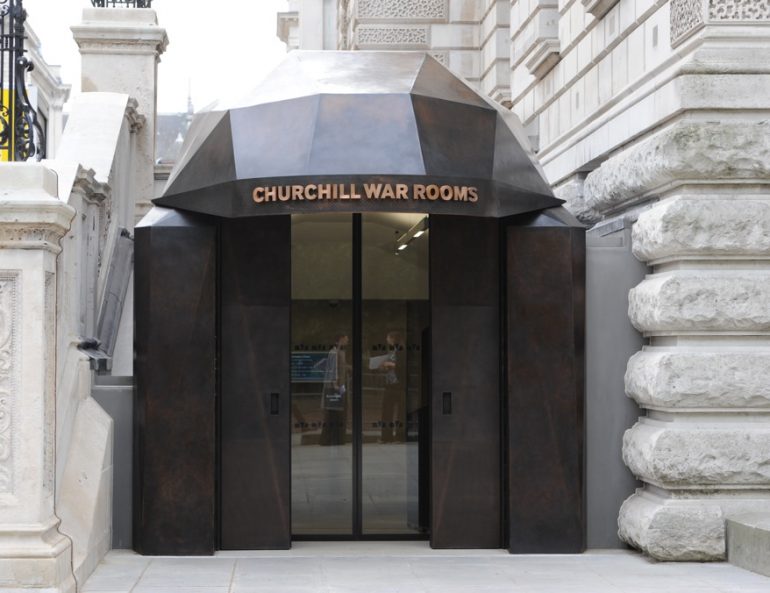 Churchill War Rooms – New Entrance. Photo credit: © Imperial War Museum.
Churchill War Rooms – New Entrance. Photo credit: © Imperial War Museum.
3. At the end of World War II, the Cabinet War Rooms were simply shut down. The lights were switched off and the doors locked. It was not until the 1980s that they were cleaned and re-opened as a visitor attraction.
4. Originally built as a basement for storage, the Cabinet War Rooms had no proper plumbing or drainage. This was a particular burden to Winston Churchill, who was in the habit of taking two baths a day.
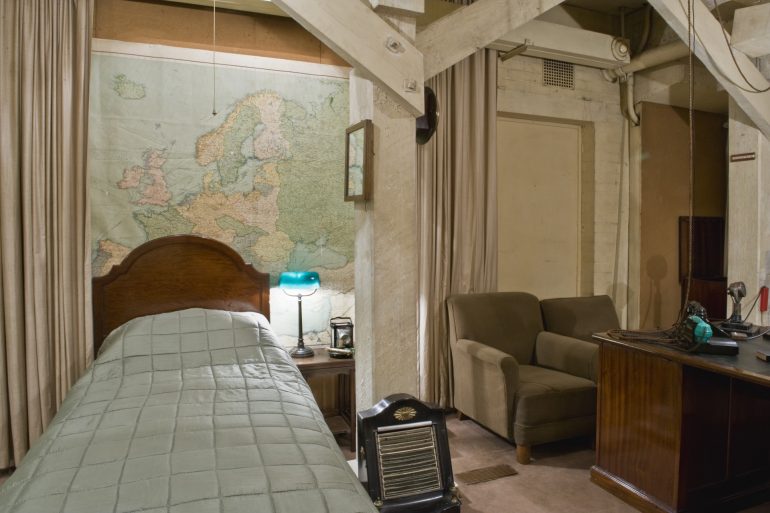
Churchill War Rooms – Churchill’s bedroom. Photo credit: © Imperial War Museum.
5. The Cabinet Room still looks just like it did for 115 meetings of the wartime government. In front of each seat is a fresh blotter, as the used ones were collected every evening and burned for security reasons.
6. The Winston Churchill Museum has one of the few examples of an Enigma machine, used by the German Navy to encode their communications. The Enigma code was eventually deciphered by a team of codebreakers which included Alan Turing, widely considered as the father of computer science. His story is told in the hit film The Imitation Game.
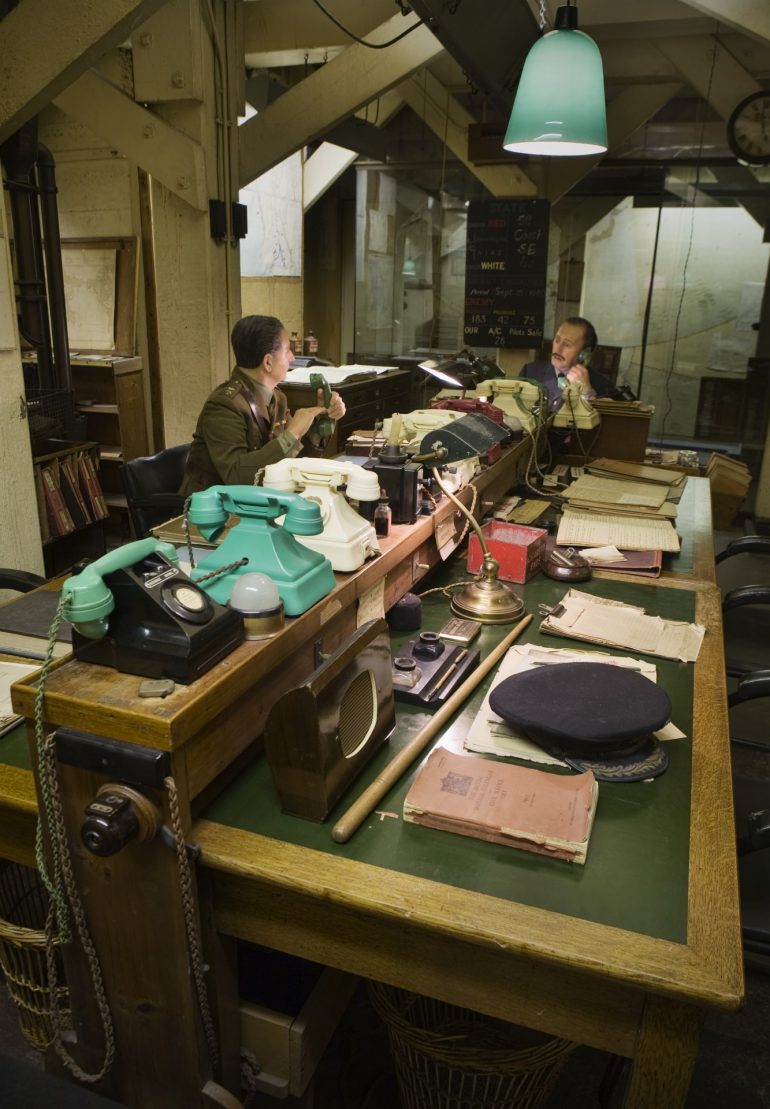 Churchill War Room – The Map Room. Photo credit: © Imperial War Museum.
Churchill War Room – The Map Room. Photo credit: © Imperial War Museum.
7. A highlight of the museum is the Date Table, an interactive exhibit which enables you to look up almost any date in Winston Churchill’s 90 year lifespan. It will then reveal what happened on that day, through facsimile documents and photographs. Many significant dates will launch animations which bring the events to life.
8. Winston Churchill had a very distinctive public image. The museum has exhibits of the actual items he was seldom seen without: bow tie, bowler hat, cigar and glass of brandy.
9. The museum has recordings of Churchill’s greatest speeches, delivered during the darkest days of the war and credited with keeping morale high even when things were going badly. In the words of John F Kennedy, “he mobilised the English language and sent it into battle”.
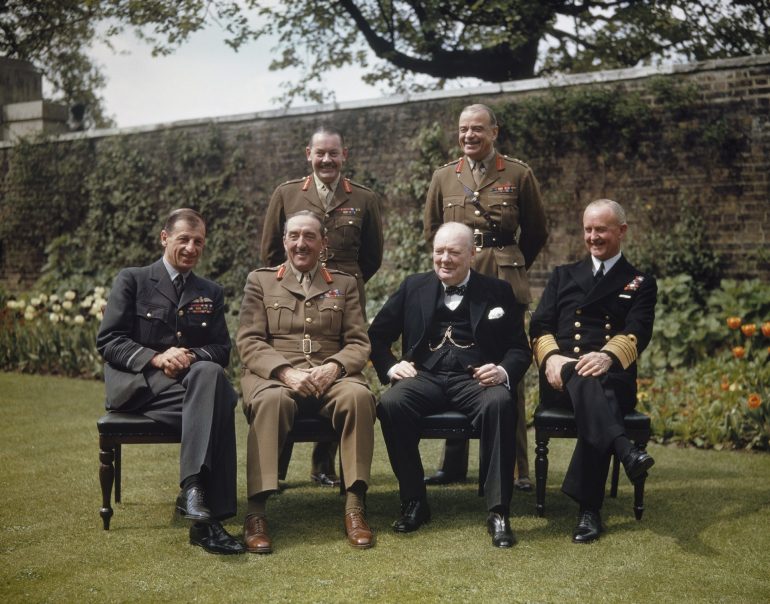 Churchill War Rooms – Churchill with Chiefs of Staff. Photo credit: © Imperial War Museum.
Churchill War Rooms – Churchill with Chiefs of Staff. Photo credit: © Imperial War Museum.
10. Amongst the countless medals, citations, honours, and prizes on display in the Cabinet War Rooms museum are Winston Churchill’s Nobel Prize for Literature, awarded in 1953. The trophy is a silver-plated book, with an inscription engraved on the cover. See if you can spot the spelling mistake!
UPDATE
As a result of the awarding winning film ‘The Darkest Hour’ starring Gary Oldman who won an Oscar for Best Actor 2018, the Cabinet War Rooms are experiencing a high demand for admission tickets. When planning your visit avoid disappointment by securing your admission tickets in advance.
Using the services of a Blue Badge Tourist Guide makes the visit to the Cabinet War Rooms even more special and informative. On a visit, you will be shown the actual rooms where information was gathered, analysed and military action planned by Winston Churchill. You will be able to imagine the wartime atmosphere inside this top-secret command bunker and appreciate the forceful character of Sir Winston Churchill who is repeatedly voted as the Greatest Briton ever.



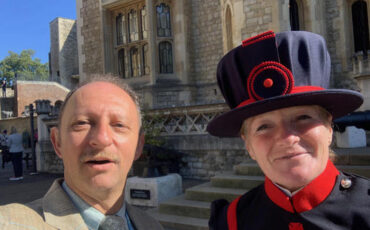
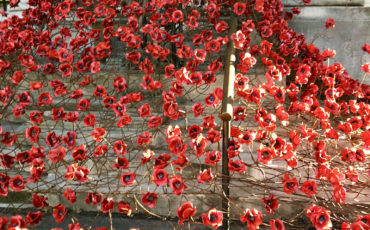


Hi Jeff – enjoyed your 10 reasons to visit war rooms. Saw them 8 years ago and planning on going again soon. Wonder what you think of the new Churchill movie???
Actually the war rooms were far more impressive in 1971 when I visited them as a result of reading Len Deighton’s guide to London. You called the Cabinet Offices and asked for Mr. Trigger (his name!), and scheduled a date and time for him to guide a party of no more than six. The rooms were still just as they had been when the doors were closed in 1945. No exhibits, no dummies positioned around tables, no reconstructions and exactly the same layout of the rooms as during the war (that has been changed, sadly, to accommodate tourists).
I think it was even the same dust as was left in the air back when, and perhaps the original cigarette butts?. Many more people can enjoy the War Rooms today than the 12 a day in 1971. But do they know that they are seeing a Disneyfied version and not the original?